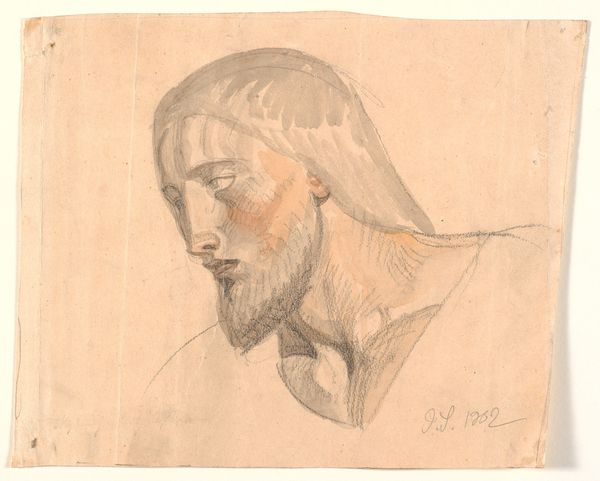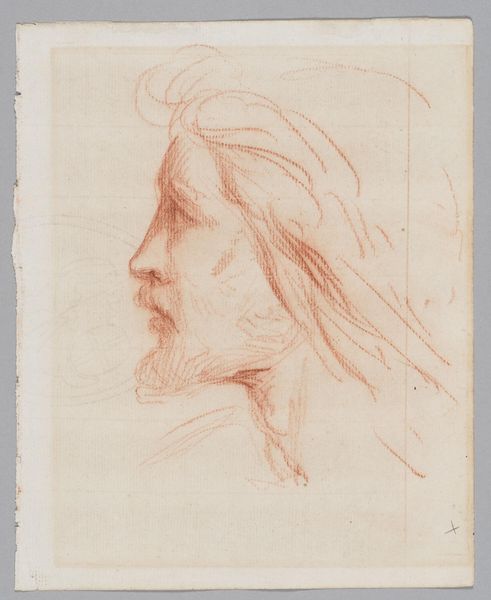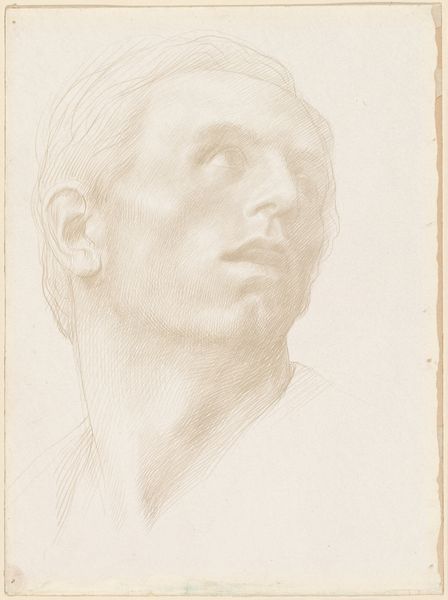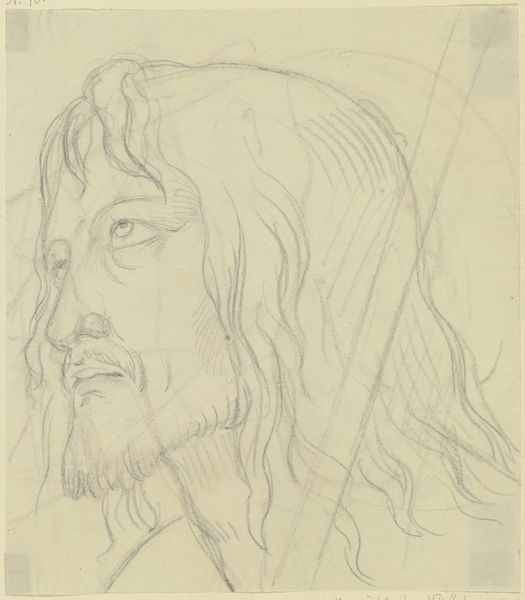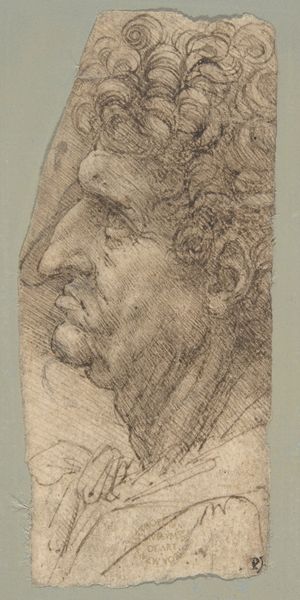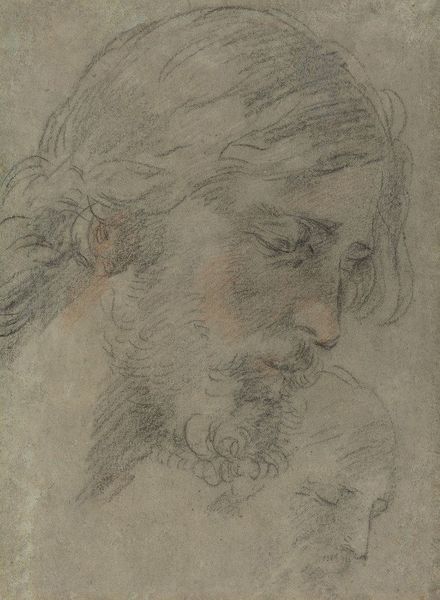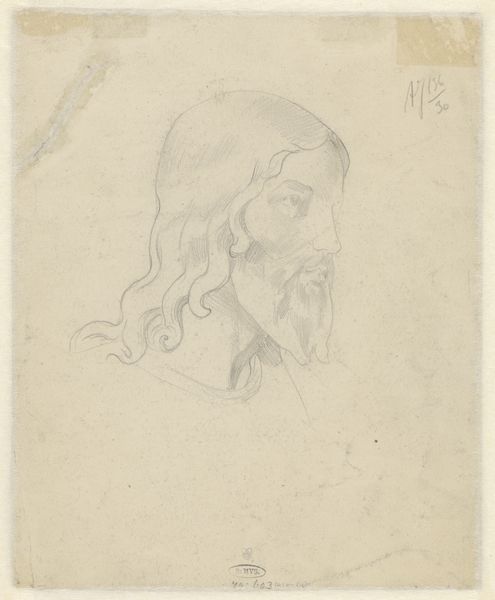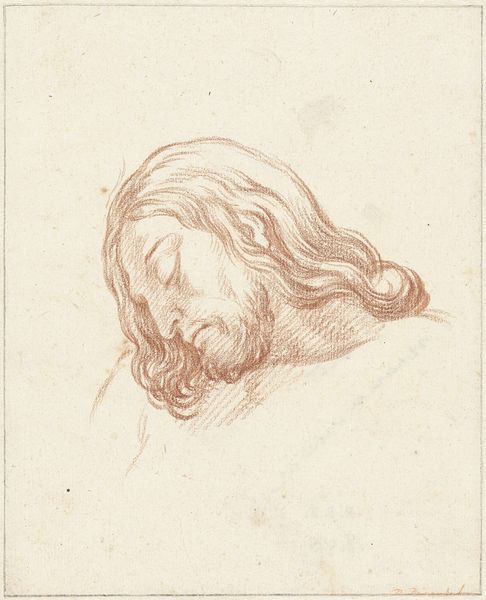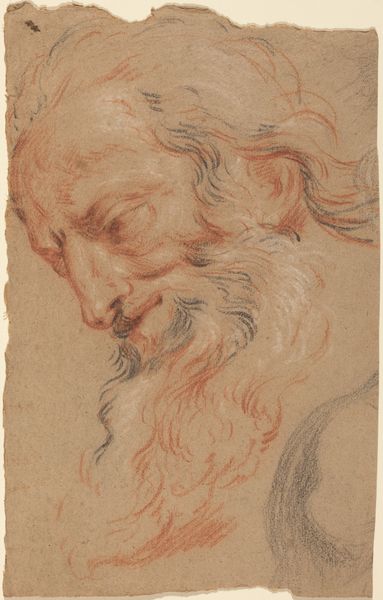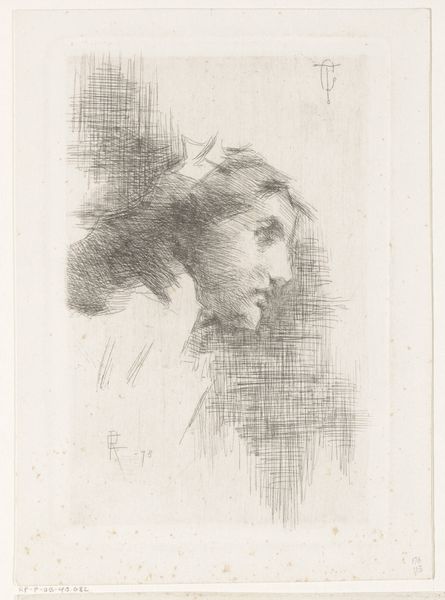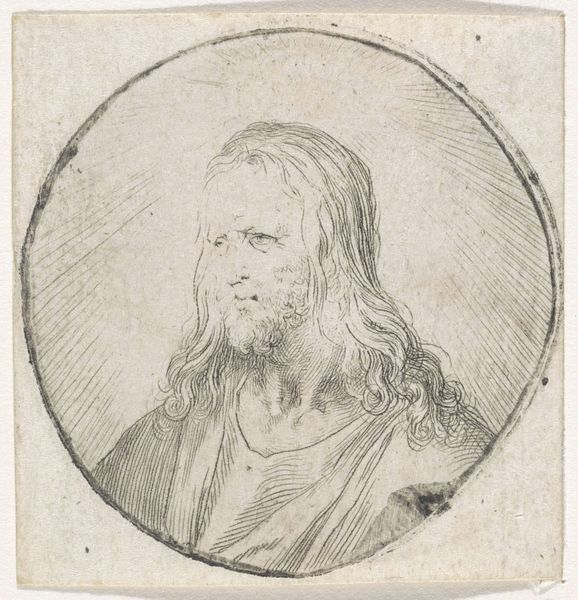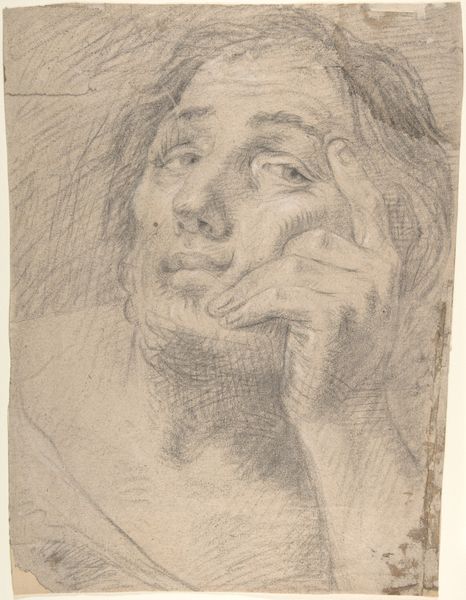
Head of a Saint (profile to the right), after Fra Angelico 1845 - 1917
0:00
0:00
drawing, print, pencil
#
portrait
#
drawing
# print
#
pencil sketch
#
pencil drawing
#
pencil
#
portrait drawing
#
academic-art
#
realism
Dimensions: Sheet: 9 1/16 x 4 3/16 in. (23 x 10.6cm)
Copyright: Public Domain
Curator: This drawing, "Head of a Saint (profile to the right), after Fra Angelico," is attributed to Edgar Degas and was created sometime between 1845 and 1917. It’s a pencil study, currently residing here at The Met. What are your initial impressions? Editor: Austere. The delicate lines against that toned paper lend a solemn quality. The halo, rendered with such restraint, nearly disappears. There's a palpable sense of reverence in the image. Curator: Absolutely. Given its status as a copy "after" Fra Angelico, consider Degas's likely encounter with early Renaissance art and his labor involved in meticulously reproducing an artistic ancestor’s work. The physicality of pencil on paper, the time spent honing his skills by copying, speaks to a deep engagement with the material realities of art production and tradition. Editor: And how that process refines the symbolic meaning! The subject, the saint, is defined not just by form, but by the symbolic weight carried by a halo and classical profile that evoke centuries of Christian art. Note also how the somewhat coarse paper contrasts to our symbolic understanding of saintliness - humble materials shaping an idea of reverence. Curator: Right, the paper itself grounds the image, preventing it from becoming overly idealized. It connects to a specific economy: the cost of materials, the availability of paper grades in 19th-century France. What does it mean to re-present this figure, these forms, through contemporary industrial means? Editor: Re-contextualizing sacred imagery for a modern audience, perhaps? By stripping away the vibrant color often found in Fra Angelico, and presenting it as a simple drawing, the focus shifts. It forces us to confront the underlying symbolic language stripped to its essentials, questioning our cultural memory surrounding sainthood. Curator: It definitely complicates notions of artistic originality. It invites considerations on how Degas positioned himself in art history through acts of copying, paying homage to earlier masters through laborious redrafting and material consideration. Editor: Looking at it that way makes it quite contemporary still. That kind of conscious dialogue between present and the deep past seems central to its meaning. Curator: Precisely. So, while the work initially seems reverent on the surface, a deeper look reveals Degas investigating materials, challenging the hierarchies and economics embedded in artistic creation itself. Editor: It is an invitation to see the sacred through the secular, prompting contemplation and cultural reassessment. Curator: Thank you.
Comments
No comments
Be the first to comment and join the conversation on the ultimate creative platform.
